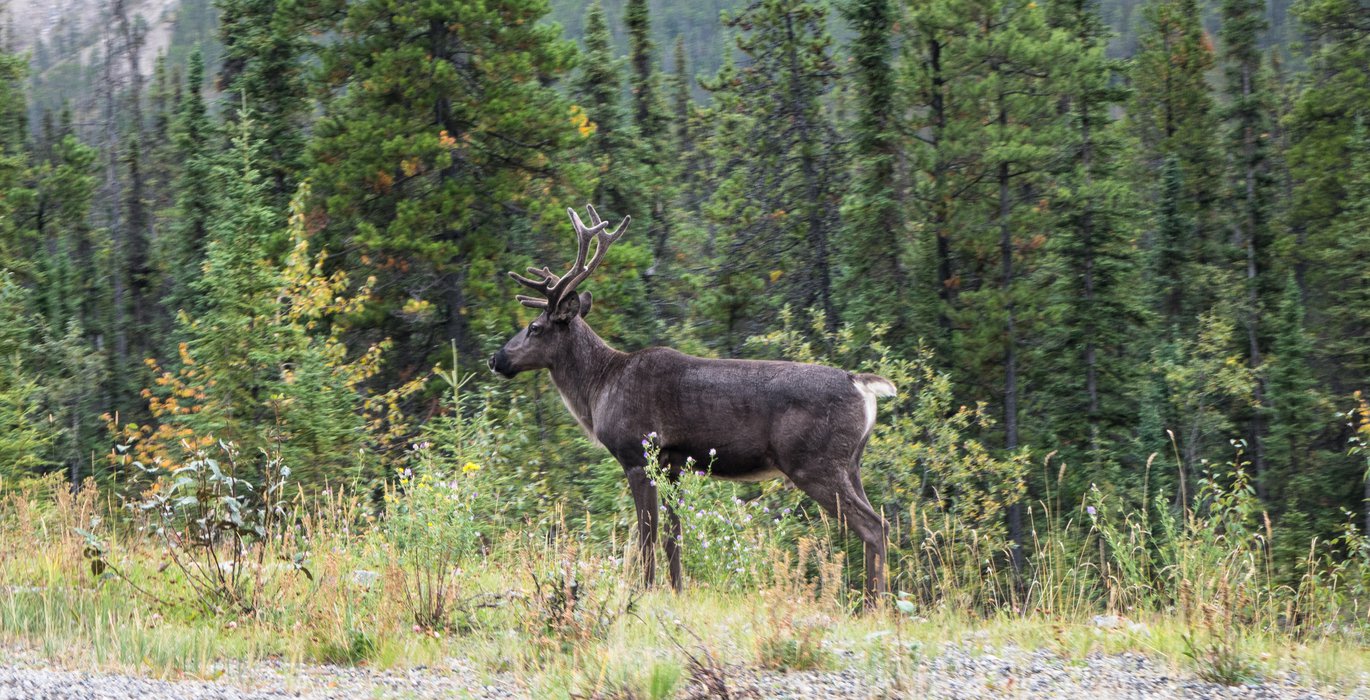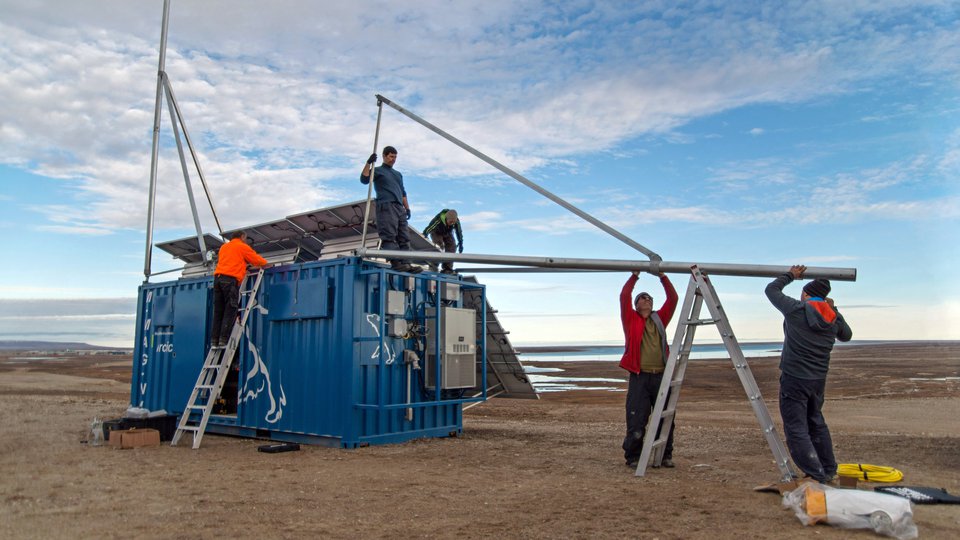
The COVID-19 virus is turning up in new animal hosts, particularly wild deer, as a result of widespread human infections, a global epidemiological event scientists say could have impacts for both human and animal health as the virus continues to colonize–or even become endemic within–new species.
Understanding where the virus is spreading to new animal populations may yield important insights into how and how often the virus moves into novel hosts and what species (besides humans) are susceptible to infection. To this end, Environment and Climate Change Canada (ECCC) has piloted a nation-wide study on SARS-CoV-2– spillover into wildlife utilizing the Canadian Animal Health Surveillance System (CAHSS) to collect and analyze animal samples nationwide, including in Canada’s North.
Both Yukon and the Northwest Territories are participating in the project.
“This (study) will help researchers better understand which species can be affected and how wildlife are affected. Can they just be infected (by the virus) or are …becoming ill or having clinical symptoms?” said Kristenn Magnusson, program veterinarian with the Yukon’s Animal Health Unit. “ We also hope to better understand how the virus is transmitted among wildlife.”
“The risk of spillover of COVID-19 into northern wildlife is considered low, given the low levels of direct contact between people and live wildlife (in the Northwest Territories),” Jessica Davey-Quantick, a representative for the territory’s Department of Environment and Natural Resources said via email. “The Northwest Territory’s participation in this national monitoring program will help understand the possible exposure and impact of COVID on various wildlife species across Canada.”
Nunavut, the only territory not presently involved, does not keep a veterinary officer on staff, and and “had not been asked (by the ECCC) to participate in the program or submit animals for testing,” Casey Lessard, a representative for Nunavut’s Department of Environment told Arctic Focus.
While the precise origin of SARS-CoV-2 remains murky, the virus is largely believed to have made the initial jump into humans from an unknown host species, possibly bats. This kind of adaptive infection–in which a disease previously confined to animals learns to infect and spread itself among humans independent of the original vector species–is called spillover.
Spillovers, even those on the magnitude of COVID-19, are not unprecedented: the black death, ebola and HIV/AIDs are all the result of species-hoping pathogens. Likewise, the reverse event–called spillback–is not a new phenomena; a strain of morbillivirus caused a severe (now eradicated) disease of even-toed ungulates called rinderpest, and is thought to have spilled into people to cause measles through contact with cattle, then spillback into dogs, in which it causes distemper.
“Our capacity to study this (virus) in humans is unprecedented– as is our ability to study (its) spillover and spillback,” said Jennifer Provencher, a research scientist with the ecotoxicology and wildlife health department within the ECCC working on the project. “We've never been able to study such an event in such a rapid, real time way.”
“We’re seeing a real-time shift (in the virus) that is of human interest and human concern… and from an animal health perspective (as well). In our organization we talk a lot about ‘One Health’ (because) to really understand human health and animal health you have to contextualize them together, and one way that the work we’re doing is important is that it really demonstrates that this is true.”
“To date, we’ve tested white-tailed deer, mule deer, elk, moose, caribou, and black-tailed deer and (most of) the positives we have to date are in whitetails–but I will say that the mule deer, elk and moose and caribou numbers (tested) are much lower.”
In the case of SARS-CoV-2, pets, including dogs and (especially) cats have been known to be susceptible since the early days of the pandemic, although these cases are often asymptomatic and don’t appear to be able to spread the virus back to people: the first confirmed Canadian spillback case documented by CAHSS was confirmed Oct 6, 2020, in a dog in Ontario. The virus has also turned up in a host of zoo animals–who, by the very nature of their captivity, have close contact with humans who might be carrying the virus–including big cats, hippopotamuses, manatees, gorillas and even a pair of hyenas; the majority of these cases were also mild or even asymptomatic.
However, in farmed mink–which, unlike their wild cousins, live in extremely close, confined quarters with each other–the virus has caused mass illness with high death rates. Moreover mink not only contracted the illness through their handlers but passed the virus back into humans, making them the largest domesticated animal vector for SARS-CoV-2. Outbreaks of the virus on British Columbia farms in December 2020 and May 2021 led to the government decision to completely phase out mink farming in that province by 2025, due to concerns around COVID-19 transmission and mutation.
Because of what was known about the virus at the time, Provencher says back in April 2020 the “very initial discussions” were around the possibility of infection in bats, of which Canada has 18 species, and birds. After some “risk assessment exercises” and consultation with experts, however, these were “quickly ruled out” and the group turned their attention to mammals in closer contact with humans, what Provencher calls “more urban animals,” such as raccoons and skunks. In the spring of 2021, however, a study on SARS-Cov-2 in captive deer in the US showed that the animals were capable of contracting the virus, Provencher and her colleagues “very rapidly swung (their) attention” to cervids.
That shift in attention proved to be both well-founded and wise–the was turning up in the US in wild whitetails in the US as well, with strong evidence that it was being spread independently from deer to deer within infected populations at an alarmingly high rate–in Pennsylvania, up to 20 per cent of the deer sampled tested positive for the virus. By late 2021, samples from Quebec confirmed the presence of SARS-CoV-2 in whitetail deer, making the common ungulates the first documented species of wildlife in Canada to be a carrier.
“This is an emerging disease, an emerging pathogen,” Provencher says. “There was a path to get to cervids that wasn’t on the sampling block from the get-go.”
To date, the study has sampled 1,681 wild non-cervid mammals and 1,900 wild cervids from all across Canada: all the non-cervids have come back negative, says Provencher. Fifty-two cervids have been confirmed to be infected with SARS-CoV-2 so far.
On the surface, 52 does not look like a big number–however, infections were found in every province sampled, except Nova Scotia, indicating multiple spillback events. A peer-reviewed American paper published in January 2022 on the subject found “the geographic distribution and nesting of clusters of deer and human lineages strongly suggest multiple human-to-deer transmission events followed by subsequent deer-to-deer spread.”
“These discoveries have important implications for the long-term persistence of the SARS-CoV-2 pandemic. Our findings highlight an urgent need for a robust and proactive “One Health” approach to obtain enhanced understanding of the ecology, molecular evolution, and dissemination of SARS-CoV-2,” the paper reads.
It also noted that, while widespread interspecies transmission has not yet been observed, deer could possibly become an established “reservoir'' (for the virus) that can further drive the emergence of novel variants with the potential for spillback to humans,”a transmission cycle previously documented in infected farmed mink.
Almost all the positive samples in the ECCC study came from whitetail deer, which is in keeping with results from the rest of North America (in the ECCC data set, two mule deer were found to be infected, and a mule deer in Utah tested positive in March 2022, making it the first of that species found to be infected in the US)--which begs the question, what makes whitetail more likely to pick up SARS-CoV-2 than others animals, or even other species of deer?
Part of the issue may have to do with the complexities of sampling species over a land mass as large as Canada; whitetail are both common and populous in south-eastern provinces like Ontario and Quebec, where the majority of the country’s people live. Deer are usually tested through roadkill or hunter submission programs, so the ECCC may simply be testing more whitetails and getting more positives because more whitetails are being submitted for sampling.
“To date, we’ve tested white-tailed deer, mule deer, elk, moose, caribou, and black-tailed deer and (most of) the positives we have to date are in whitetails–but I will say that the mule deer, elk and moose and caribou numbers (tested) are much lower,” said Provencher.
Moreover, it may be a matter of where whitetail deer tend to live–near highly populated urban areas, including greenbelts, suburban lawns and golf courses. Whitetails are, in many parts of North America, effectively an “urban deer” says Provencher.
To this end, it’s notable that none of the samples, cervid or otherwise, submitted by the Northwest Territories or Yukon have come up positive to date; whitetails and mule deer both occur in the Yukon within a limited range (one which has been expanding in recent years) although both species are more common in the Northwest Territories.
This may speak to the different ways Northerners interact with wildlife, including cervids, as the territories have a lower population density than southern provinces or city centers, says Magnusson.
“What we see in positive cases among whitetail deer is that detection has popped up where (deer) are living in densely populated areas with a high number of human cases of COVID-19,” says Magnusson.
Hunting, especially of large cervids such as deer, caribou and moose, are an important cultural and subsistence activity for many Northern and Indigenous communities. Although there is no evidence this is a common occurrence, a recent study (that has not yet been peer reviewed) found evidence of a person contracting COVID-19 through contact with infected deer, and infected deer appear to present asymptomatically, meaning they may not look or act unusually. Experts say hunters–who, by the nature of the practice, come in close contact with harvested animals–should consider extra precautions when handling their kills.
“We do certainly recommend people take precautions…when they're handling (any) harvested wildlife,”Magnusson said. “Basic things like harvesting only animals that look healthy and washing hands and general hygiene, not bringing your hands to your mouth while you’re processing. And of course, it comes back to being vaccinated as well–there are different tools we have in our toolbox when it comes to protecting ourselves when we’re harvesting wildlife.”
“One extra step would be…perhaps just as an added precaution, wearing a mask when exposed to the respiratory tissues of (a harvested) animal, and just being a bit extra cautious when handling anything from snout to lungs, (as)that's where this virus tends to be in a heavier load.”
How deer are actually contracting the virus is still uncertain; one theory is contaminated wastewater, but that has yet to be confirmed as a vector for spillback into whitetails. Direct human-to-animal infections could also be another source, says Provencher.
“In some parts of this continent there are places where people hand feed deer–there's a park here in Ottawa where you can just drive through the forest and the deer come up and eat out of your hand,” says Provencher.
“I think the whitetailed-deer-to-human interface is a lot closer than maybe the average person realizes.”





